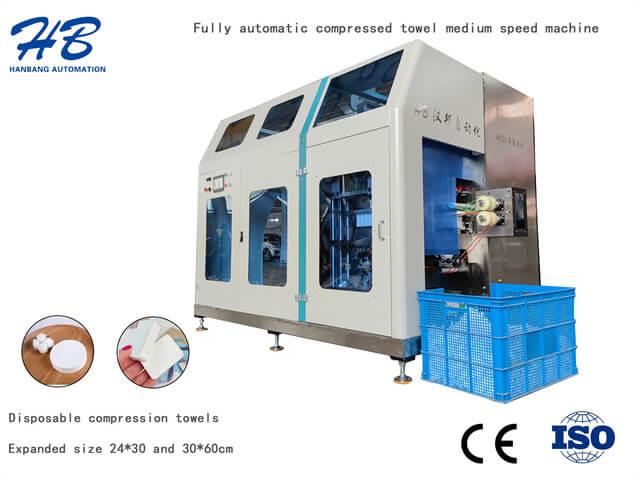Author:HB Nonwoven MachineryFROM:Compressed Towel Machine Manufacturer TIME:2023-11-02
Introduction: The non-woven roll slitting machine is a vital tool in the hygiene product industry, specifically for the production of diapers and sanitary napkins. Proper maintenance of this machine is crucial to ensure its smooth operation and longevity. In this article, we will discuss essential maintenance tips for the non-woven roll slitting machine.

Regular cleaning and lubrication are essential for the proper functioning of the non-woven roll slitting machine. Dust, debris, and residual materials can accumulate on the machine's components, leading to reduced efficiency and potential damage. Use a soft brush or compressed air to remove any dirt or debris from the machine. Additionally, lubricate the machine's moving parts regularly to minimize friction and prevent wear and tear.

The blades of the slitting machine need to be inspected and maintained regularly. Dull or damaged blades can affect the quality and precision of the slitting process. Ensure that the blades are sharp and free from any nicks or chips. Sharpen or replace the blades as necessary to maintain optimal performance. It is also important to check the blade alignment to ensure clean and accurate cuts.

Proper tension control is vital for the non-woven roll slitting machine to run smoothly and produce consistent results. Check and adjust the tension settings regularly to avoid issues such as wrinkling or tearing of the material. Improper tension can also lead to uneven cuts and waste. Refer to the machine's manual or consult with the manufacturer for the recommended tension settings.
The rollers in the slitting machine play a crucial role in guiding and feeding the material. Regularly inspect the rollers for any signs of wear, damage, or misalignment. Misaligned or damaged rollers can cause uneven feeding and result in jagged cuts or material jams. Clean the rollers regularly to remove any dirt or adhesive buildup that can affect their performance.
Check the electrical components of the non-woven roll slitting machine regularly to ensure they are in good working condition. Inspect the wiring, connectors, and switches for any signs of damage or loose connections. Clean the electrical contacts to prevent corrosion and ensure proper conductivity. It is recommended to consult a professional technician for more complex electrical maintenance tasks.
Safety should always be a priority when operating and maintaining the non-woven roll slitting machine. Make sure that all safety guards and devices are in place and functioning correctly. Train the operators on proper usage and handling procedures to prevent accidents and injuries. Regularly inspect and replace any worn-out or damaged safety components to maintain a safe working environment.
Regular calibration and testing of the non-woven roll slitting machine are necessary to ensure accurate and consistent results. Check and calibrate the machine's settings, such as speed and length measurement, according to the product requirements. Perform sample tests regularly to verify the machine's performance and make any necessary adjustments or corrections.
Maintaining comprehensive records and documentation of maintenance activities is essential for the non-woven roll slitting machine. Keep track of cleaning schedules, lubrication procedures, blade replacements, and any repairs or adjustments made. These records can help identify patterns, track performance, and guide future maintenance tasks.
In conclusion, proper maintenance of the non-woven roll slitting machine is crucial for its efficient operation and longevity. Regular cleaning, lubrication, blade maintenance, tension control, roller inspection, electrical component checks, adherence to safety measures, calibration, and keeping detailed records are essential maintenance tips. By following these guidelines, manufacturers can ensure smooth production processes and consistently high-quality hygiene products.





